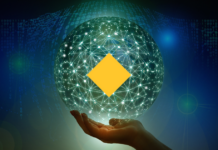The blockchain gaming industry is rapidly growing, and with billions of dollars waiting to be grabbed each year. The interest generated in game development, will only continue.
Cryptokitties is the first blockchain game built on the Ethreum network with over $6.5million spent by players during the year of release. Since then, many other projects and platforms have emerged to grow and improve on the blockchain gaming industry. Here are some of the platforms you should look at if you are interested in creating a blockchain game.
Enjin has been leading the charge in the blockchain gaming industry and they offer a free platform for creating, integrating and scaling tokenized game assets. They have also created ERC-1155 which has become an official Ethereum token standard and we had Witek Radomski, CTO and Co-founder of Enjin to share with us the difference between ERC-1155 and ERC-721. Game developers will be able to use the ERC-1155 token standard to create their in-game items and also back them with Enjin to give them additional value. With the development of efinity, Enjin will allow games to perform infinite number of transactions between millions of players and the game server at high speeds and super low cost. Due to the nature of ERC-1155 tokens, games will be able to integrate items from other games on the Enjin platform to be used in their game. This provides game developers with more ways for partnerships and utility for their own items as well. Another big achievement of Enjin is they also created the world’s most secure cryptocurrency wallet which allows users to view and transfer ERC1155 assets in the mobile wallet. There are over 20 games which are building on the platform at the moment.
Loom network provides smooth integrations into Ethereum and Tron and will soon support EOS and Cosmos as well. Loom network easily allows users to hop on board and create dapps without the need for downloading any crypto wallet software. Due to their universal transaction signing system, users can access Loom dapps using their native wallets as well. This provides users with much convenience and developers to access to a wider audience too. On top of that, developers pay a flat monthly fee on the Loom network based on volume to cover the transaction costs their users incur. Loom network is also compatible with all ERC20 and ERC721-based assets and has a handful of quality games already building on its platform. For game developers who already built a game on the Ethereum network, you can easily port your game over to the Loom Network and start scaling your game right away.
The Xaya platform is mainly aimed at decentralized blockchain gaming and has a transfer system based on Namecoin. Recently, Xayaships a game built on the Xaya platform has seen a huge technology accomplishment in blockchain gaming by bringing Xaya Game Channels to fruition. Game channels allow games to run securely off-chain in their own space and in near real-time which makes it scalable to support numerous games of millions of transactions per second. It also acts as private channels for players that run parallel to the main chain and provides a solution for disputes in a decentralized manner without the need of a 3rd party. Game channels can be also used as individual payment channels for games as well.
Cocos-BCX underlying blockchain is optimized based on Graphene technology and they are capable of delivering multiple features such as random numbers, session, timer, and heartbeat. Cocos-BCX also enables developers to debug, program and release blockchain-based Dapps and hybrid applications. In addition, the platform integrates a blockchain-based distributed ledger system, crypto wallet system and digital assets circulation platform, allowing the in-app assets to be stored off-chain permanently and to be used cross-chain. They have created the BCX-NHAS-1808 which is a non-homogeneous digital asset standard for Cocos applications. This asset standard allows items from one game to be usable in multiple games as well.
Conclusion
Every individual project mentioned above has seen many ways to improve the standard of gaming and also provide game developers with easy access to building games on the blockchain. There are amazing games being built on each of the mentioned platforms and all of them are constantly growing and improving. No matter which platform you build a game on, it is a step forward for the blockchain gaming industry. It will be a great joy to see what kind of creations will emerge and also the developments these projects are bringing. Take your time to explore because blockchain will be the future of gaming!



























